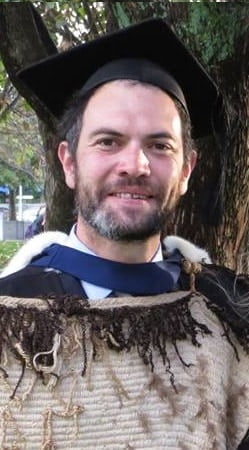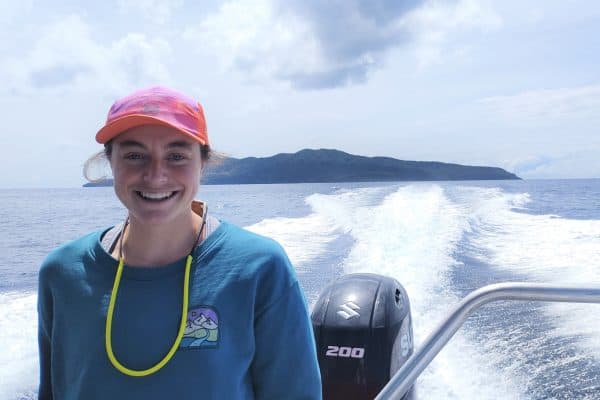Student Profile: Jake Robinson
27/08/2018
Nā Jake Robinson
Ko Ruapehu te Maunga
Ko Whanganui te Awa
Ko Atihaunui a Pāpārangi te iwi
Ko Te Pooti te Marae
Ko Jacob Robinson tōku ingoa
I whānau mai ahau a Jacob Robinson ki Raetihi pātata ki te maunga tipua nei a Ruapehu. I Raetihi ka tipu taku hiahia ki ngā kōrero tūhono, whakaora o te taiao. Mai anō i āhau e tamariki ana ka tipu taku wairua, ngākau ki ngā pukenga nui o te taiao, ka hīkoitia e ahau te papa tipu whenua o ngā ngāhere i te pāmu a taku koroua me taku kuia. No te pahutanga o te maunga tapu nei a Ruapehu i aua tau 1995 – 1996 ka uru mai te wairua ki ahau kia whai ahau i te taha mātauranga taiao, pūtaiao. I rongo, i kite ahau, tātau katoa o te motu whānui i te reo kōrero o Ruapehu i tōna pahutanga. I konei ka tipu taku hiahia ki ngā kohinga kōrero mātauranga o te taiao, hono atu te pūtaiao.
Whāia e rua ngā mahi i mahia e ahau ki te whakapakari i taku taha whai mahi. Ā, 26 taku pakeke ka tīmata ahau ki te whai i ngā tohu mātauranga pūtaiao ki Te Kunenga ki Pūrehuroa (Massey University). Ko te kaupapa i whāia e ahau ko te taha Pūtaiao hāngai ki a Papatūānuku. Mutu pai, tutuki pai i ahau te tohu Paetahi hōnore e tuhi, e tātari ana ahau i ngā momo maringi pūpū tahi mai o te rangiora (lahar) ki te taha tonga-hauāuru taiāwhio o maunga Ruapehu whakaritenga. I tēnei wā nei kei Te Kunenga ki Pūrehuroa ahau e whai ana i te Tohu Kairangi (PhD) e, rangahau ana i te momo maringi o te uku tapuae ki roto i te rohe, takiwā o Te Āti Hāunui-a-Pāpārangi.
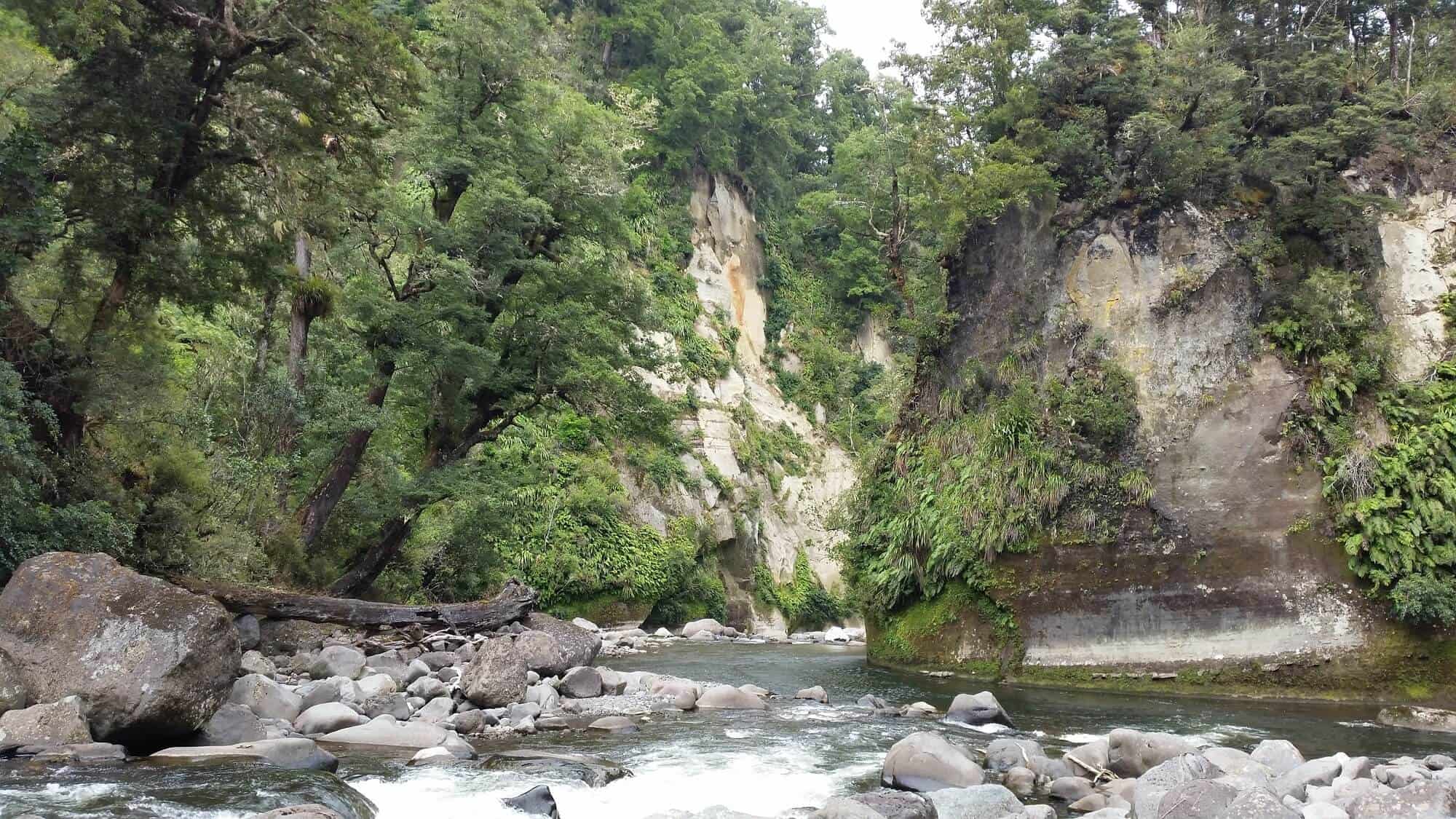
Te Kitenga Whānui o taku Kaupapa Rangahau
Ia tau haere ake nei, nui atu i te rua miriona tone o te uku, paru horoia mai ai mai i ngā awaawa katoa o Aotearoa, inā waipuke taua awa. Ā, horoia atu ana, maringi atu ana ēnei uku, paru ki roto i a Hinemoana. Raru kino ana ngā whakawhitinga puna wai Māori mai i aua hekenga nui o te paru, me ngā ao whānui hononga ki te ōranga taiao, tūhono atu ēnei tūkino kia kūitia te hāpai ora mai o te whenua. Ka ngaro atu te ora o te whenua, whai tonu mai ko ngā tāheke waipuke kaha, whakapukepuke e pēhi kino nei i ngā whenua o Whanganui me ngā whenua huri i te motu. Mo o tātau hāpori he uarā nui o tātau roto-moana me ngā awaawa, ka pēhia kinotia mai e ngā marangai tūkino, waipuke nui e mau ai te taha ohaoha. He mea tika kia aro tātau ki ēnei momo ōranga whenua, kia aro tonu ki te whakaora i te oneone motuhake ake. Ki te ora te whenua ka kaha te noho tahi mai o te pūtea. He mea tika hoki me rangahau tonu tātau ki ngā hurihanga nui o ēnei pēhitanga uku, oneone paru ki runga o te taiao e ara mai nei ēnei tauritenga kino, ā, kia whai tonu atu te whakaaro me pēhea rā e mōhio ai tātau ki ēnei hekenga tūāhae kino o te uku, paru o te oneone haere ake nei ngā tau ki o tātau whenua papai.
Ko taku kaupapa rangahau mo taku tohu kairangi he whai atu i ngā āhuatanga takoto, rere mai o ngā oneone pūpū kino nei ka āta matapaki i ngā huarahi puputu ai ngā paru, ngā oneone nei ki roto i te takiwā o Whanganui mai kore e kitea tētahi momo māramatanga o te purere, puputu o ēnei uku, paru ki roto i ngā iaia whai oranga tonutanga o te whenua. Nā runga anō i te āhua o te takoto o te whenua, ngā toka hautū o te whenua nangahu o te takiwā here o Whanganui, ko ngā toi mataora ritenga o te whenua e whakamahia ana kua kaha ake te pākarukaru mai o te whenua, maringi, tau noa ki roto i te puna wai me ngā awaawa. Ko te hīkoi, me whai atu i aua haurahi uku, oneone nei he tikanga mo te wetewete, tātari i ngā oneone puputu nei, e raru ai te takoto pai o te oneone ake, te kite atu i te rerekētanga hāngai ki te āhua o te takoto mai o aua huarahi uku, oneone e rere mai nei. Kia mārama ki ēnei hekenga ka tīka ka whakauru mai hoki te kohinga kōrero mātauranga Māori hai whakatinana, whakatipu, whakakaha i taku rangahau. Kia mārama pai ki ēnei hekenga nui o te uku me te paru e kitea ai he huarahi hai tohu māramatanga me pēhea ta tātau piri pono, tiaki pū i to tātau whenua ātaahua.
Developing sediment fingerprinting techniques for the Whanganui catchment
A bit about me
Ko Ruapehu te Maunga
Ko Whanganui te Awa
Ko Atihaunui a Pāpārangi te iwi
Ko Te Pooti te Marae
Ko Jacob Robinson tōku ingoa
I was born in the small town of Raetihi where my passion for understanding the many processes in nature started. I remember that from a very early age I was always exploring the bush on my grandparents’ farm. However, it wasn’t until witnessing the 1995-1996 eruptions of Mt Ruapehu from our house that I first thought about pursuing a career in science. After leaving secondary school, I began working at the Tangiwai sawmill as a boiler operator. I then became a fisherman working off the Whanganui coast. At 26 I started my academic journey at Massey University where I studied Earth Science and then went on to complete an honours degree that investigated the history of lahar deposits on the south-western ring plain of Mt Ruapehu. I am currently at Massey University undertaking PhD research investigating sediment tracing in the Whanganui catchment.
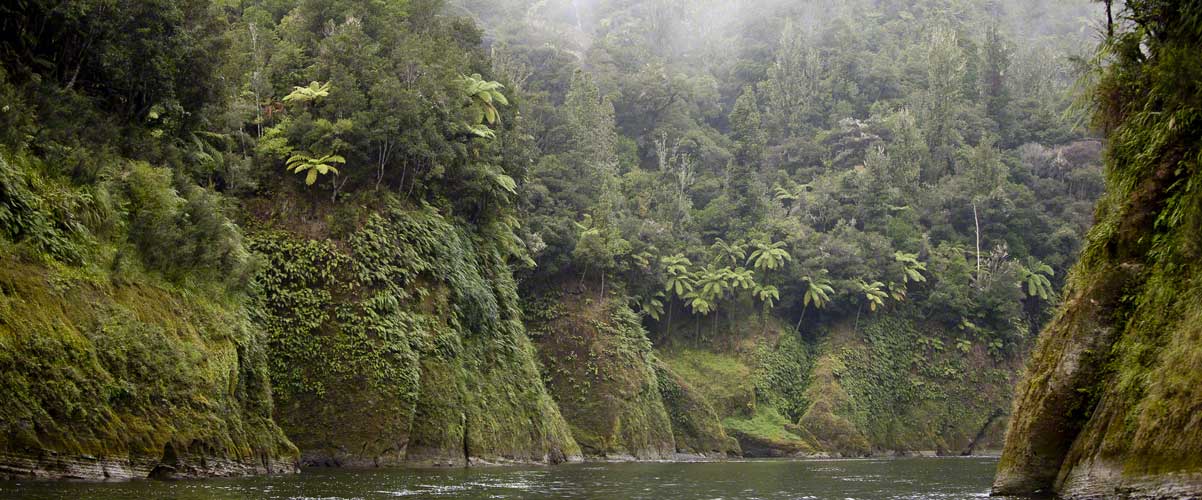
An overview of my project
Every year more than 200 million tonnes of sediment washes down New Zealand’s rivers and into the sea. This is not only having a devastating impact on many fresh water ecosystems, but is also a major concern regarding the loss of land productivity. Land instability and flooding are two further challenges that continue to have increasingly negative impacts within the Whanganui area as well as other parts of the country. As a society that highly values its lakes and rivers, is affected by frequent storms and flood events and where the economy relies heavily on soil fertility, it is important that we strive to understand the underlying natural processes causing these issues and strive to understand how these processes may change into the future.
My project aims to investigate sediment fingerprinting techniques within the Whanganui catchment in order to gain insight into the movement of sediment through the system. Due to the inherent geological and geomorphological character of the Whanganui catchment, anthropogenic influences such as land use change have greatly exacerbated rates of erosion leading to increased suspended sediment entering streams and rivers. Sediment fingerprinting is a tool for evaluating sediment provenance, capable of directly quantifying sediment supply through differentiating sediment sources based on inherent geochemical signatures. Understanding the spatial origin and movement of suspended sediment is an important step in guiding sustainable management of the natural resources within the Whanganui catchment.
Another important component of my research is the incorporation of Mātauranga Māori. More than a millennium of occupation has embedded the Whanganui River and surrounding environment deep into the collective consciousness of Whanganui iwi. A substantial environmental knowledge base has accrued during this time and is contained in the forms of recitation of whakapapa, stories, proverbs, sayings, songs, cultural activities and tribal expressions. Incorporating mātauranga pūtaiao into this research presents an opportunity to study the catchment with a unique Māori perspective using methods that adhere to mātauranga ā-iwi principles and values. This indigenous knowledge base can provide holistic traditional and contemporary insights into the physical and spiritual phenomenon operating within the Whanganui catchment and will be a key component in developing effective research tools for this project and management strategies for the future.
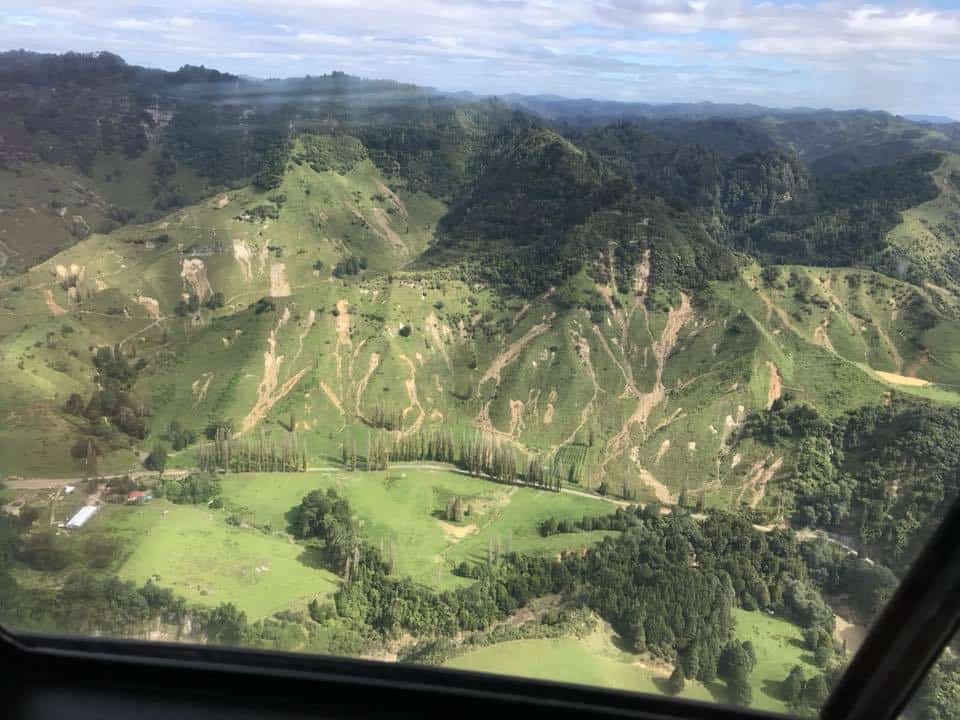
Next steps
Some of the key issues I hope to investigate with this research include enhancing our understanding of the spatial origin of sediment through investigating sub-catchment suspended sediment contributions over various time frames. I also want to develop techniques to analyse historical sediment flux regimes before and after arrival of Māori and European settlers using geochemical techniques on flood deposits. The incorporation of Mātauranga Māori is unique in this field of research and will ensure that the outcomes are relevant to tangata whenua and the wider community. To date, work in this area of research is very limited in the Whanganui catchment and within New Zealand. New approaches will be explored to expand upon the current literature relating to sediment fingerprinting techniques and sediment movement using the Whanganui catchment as a case study. After the completion of my research project, I hope to continue working in the Whanganui region with my iwi to achieve our aspirations as kaitiaki of the environment.
